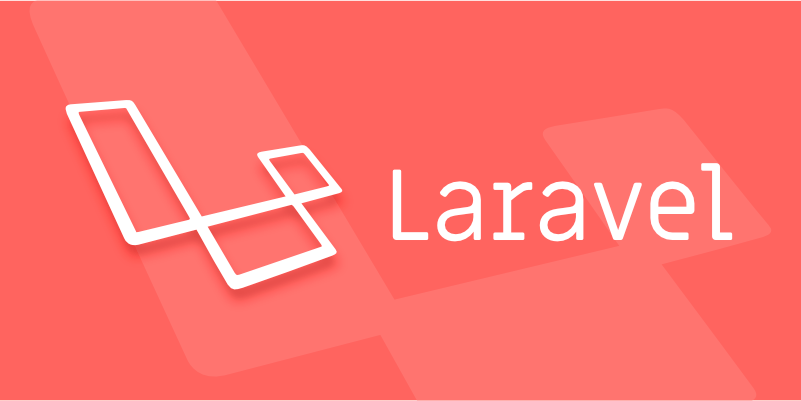Create app/Helpers/helpers.php file and define functions such as formatPrice, isActiveRoute and uploadImage; 2. Add helpers.php path in autoload.files of composer.json; 3. Run composer dump-autoload to make the functions globally available; 4. Use these functions anywhere in view, controller, etc.; 5. If the functions increase, you can split multiple auxiliary files and register them to autoload.files; 6. Follow best practices to avoid logical complexity and naming conflicts, and ultimately achieve simple and efficient global function reuse.

Creating custom helper functions in Laravel is a simple and effective way to reuse common logic across your application. Here's how you can do it properly.

1. Create a Custom Helpers File
Laravel doesn't restrict where you put helper functions, but the common practice is to create a dedicated file for them.
- Navigate to the
app/Helpersdirectory (create it if it doesn't exist). - Create a new PHP file, eg,
helpers.php.
app/
└── Helpers/
└── helpers.php Now, add your custom functions inside helpers.php :

<?php
// app/Helpers/helpers.php
function formatPrice($amount)
{
return '$' . number_format($amount, 2);
}
function isActiveRoute($routeName)
{
return request()->routeIs($routeName) ? 'active' : '';
}
function uploadImage($file, $folder = 'images')
{
return $file->store($folder, 'public');
}?? These functions are global, so avoid naming conflicts (eg, don't use names like
request()orconfig()).
2. Autoload the Helpers File with Composer
To make Laravel load your helper functions automatically, you need to tell Composer to include the file.

Open composer.json and locate the autoload section. Update it like this:
"autoload": {
"psr-4": {
"App\\": "app/"
},
"files": [
"app/Helpers/helpers.php"
]
} After updating composer.json , run:
composer dump-autoload
This command regenerates the autoloader and include your helper file in every request.
3. Using the Helper Functions
Now you can use your custom functions anywhere in your app — in views, controllers, Blade templates, or routes.
In a Blade template:
<p>Total: {{ formatPrice(99.99) }}</p>
<li class="{{ isActiveRoute('home') }}">Home</li>In a controller:
use Illuminate\Http\Request;
class ProductController extends Controller
{
public function store(Request $request)
{
$path = uploadImage($request->file('image'), 'products');
// Save $path to database
}
}Optional: Organize Helpers into Multiple Files
If your app grows, consider splitting helpers into multiple files (eg, string_helpers.php , file_helpers.php ).
Just add each file to the files array in composer.json :
"files": [
"app/Helpers/helpers.php",
"app/Helpers/string_helpers.php",
"app/Helpers/file_helpers.php"
] And run composer dump-autoload again.
Best Practices
- Avoid overusing helpers — if logic is complex or involves business rules, use services or classes instead.
- Keep function names clear and unique.
- Don't put Laravel-specific logic (like DB queries) directly in helpers unless they're truly reusable.
- Consider type hints and return types for better maintenance.
That's it. Custom helpers in Laravel are easy to set up and handy for small, reusable utilities. Just create the file, autoload it, and start using your functions. Basically, it boils down to one file and one Composer tweak.
The above is the detailed content of How to create custom helper functions in Laravel?. For more information, please follow other related articles on the PHP Chinese website!

Hot AI Tools

Undress AI Tool
Undress images for free

Undresser.AI Undress
AI-powered app for creating realistic nude photos

AI Clothes Remover
Online AI tool for removing clothes from photos.

Clothoff.io
AI clothes remover

Video Face Swap
Swap faces in any video effortlessly with our completely free AI face swap tool!

Hot Article

Hot Tools

Notepad++7.3.1
Easy-to-use and free code editor

SublimeText3 Chinese version
Chinese version, very easy to use

Zend Studio 13.0.1
Powerful PHP integrated development environment

Dreamweaver CS6
Visual web development tools

SublimeText3 Mac version
God-level code editing software (SublimeText3)

Hot Topics
 Creating Custom Validation Rules in a Laravel Project
Jul 04, 2025 am 01:03 AM
Creating Custom Validation Rules in a Laravel Project
Jul 04, 2025 am 01:03 AM
There are three ways to add custom validation rules in Laravel: using closures, Rule classes, and form requests. 1. Use closures to be suitable for lightweight verification, such as preventing the user name "admin"; 2. Create Rule classes (such as ValidUsernameRule) to make complex logic clearer and maintainable; 3. Integrate multiple rules in form requests and centrally manage verification logic. At the same time, you can set prompts through custom messages methods or incoming error message arrays to improve flexibility and maintainability.
 Working with pivot tables in Laravel Many-to-Many relationships
Jul 07, 2025 am 01:06 AM
Working with pivot tables in Laravel Many-to-Many relationships
Jul 07, 2025 am 01:06 AM
ToworkeffectivelywithpivottablesinLaravel,firstaccesspivotdatausingwithPivot()orwithTimestamps(),thenupdateentrieswithupdateExistingPivot(),managerelationshipsviadetach()andsync(),andusecustompivotmodelswhenneeded.1.UsewithPivot()toincludespecificcol
 Sending different types of notifications with Laravel
Jul 06, 2025 am 12:52 AM
Sending different types of notifications with Laravel
Jul 06, 2025 am 12:52 AM
Laravelprovidesacleanandflexiblewaytosendnotificationsviamultiplechannelslikeemail,SMS,in-appalerts,andpushnotifications.Youdefinenotificationchannelsinthevia()methodofanotificationclass,andimplementspecificmethodsliketoMail(),toDatabase(),ortoVonage
 Understanding Dependency Injection in Laravel?
Jul 05, 2025 am 02:01 AM
Understanding Dependency Injection in Laravel?
Jul 05, 2025 am 02:01 AM
Dependency injection automatically handles class dependencies through service containers in Laravel without manual new objects. Its core is constructor injection and method injection, such as automatically passing in the Request instance in the controller. Laravel parses dependencies through type prompts and recursively creates the required objects. The binding interface and implementation can be used by the service provider to use the bind method, or singleton to bind a singleton. When using it, you need to ensure type prompts, avoid constructor complications, use context bindings with caution, and understand automatic parsing rules. Mastering these can improve code flexibility and maintenance.
 Strategies for optimizing Laravel application performance
Jul 09, 2025 am 03:00 AM
Strategies for optimizing Laravel application performance
Jul 09, 2025 am 03:00 AM
Laravel performance optimization can improve application efficiency through four core directions. 1. Use the cache mechanism to reduce duplicate queries, store infrequently changing data through Cache::remember() and other methods to reduce database access frequency; 2. Optimize database from the model to query statements, avoid N 1 queries, specifying field queries, adding indexes, paging processing and reading and writing separation, and reduce bottlenecks; 3. Use time-consuming operations such as email sending and file exporting to queue asynchronous processing, use Supervisor to manage workers and set up retry mechanisms; 4. Use middleware and service providers reasonably to avoid complex logic and unnecessary initialization code, and delay loading of services to improve startup efficiency.
 Managing database state for testing in Laravel
Jul 13, 2025 am 03:08 AM
Managing database state for testing in Laravel
Jul 13, 2025 am 03:08 AM
Methods to manage database state in Laravel tests include using RefreshDatabase, selective seeding of data, careful use of transactions, and manual cleaning if necessary. 1. Use RefreshDatabasetrait to automatically migrate the database structure to ensure that each test is based on a clean database; 2. Use specific seeds to fill the necessary data and generate dynamic data in combination with the model factory; 3. Use DatabaseTransactionstrait to roll back the test changes, but pay attention to its limitations; 4. Manually truncate the table or reseed the database when it cannot be automatically cleaned. These methods are flexibly selected according to the type of test and environment to ensure the reliability and efficiency of the test.
 Choosing between Laravel Sanctum and Passport for API authentication
Jul 14, 2025 am 02:35 AM
Choosing between Laravel Sanctum and Passport for API authentication
Jul 14, 2025 am 02:35 AM
LaravelSanctum is suitable for simple, lightweight API certifications such as SPA or mobile applications, while Passport is suitable for scenarios where full OAuth2 functionality is required. 1. Sanctum provides token-based authentication, suitable for first-party clients; 2. Passport supports complex processes such as authorization codes and client credentials, suitable for third-party developers to access; 3. Sanctum installation and configuration are simpler and maintenance costs are low; 4. Passport functions are comprehensive but configuration is complex, suitable for platforms that require fine permission control. When selecting, you should determine whether the OAuth2 feature is required based on the project requirements.
 Implementing Database Transactions in Laravel?
Jul 08, 2025 am 01:02 AM
Implementing Database Transactions in Laravel?
Jul 08, 2025 am 01:02 AM
Laravel simplifies database transaction processing with built-in support. 1. Use the DB::transaction() method to automatically commit or rollback operations to ensure data integrity; 2. Support nested transactions and implement them through savepoints, but it is usually recommended to use a single transaction wrapper to avoid complexity; 3. Provide manual control methods such as beginTransaction(), commit() and rollBack(), suitable for scenarios that require more flexible processing; 4. Best practices include keeping transactions short, only using them when necessary, testing failures, and recording rollback information. Rationally choosing transaction management methods can help improve application reliability and performance.






